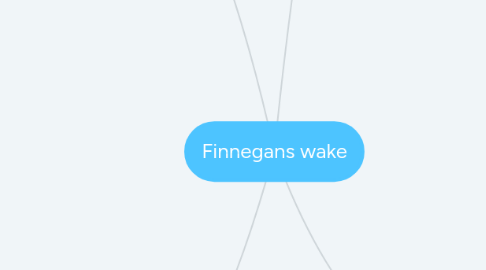
1. Techniques
1.1. The interpretation of dreams
1.1.1. Irrationality
1.1.1.1. Human mind is ruled by irrational forces, which emerge only during sleep, when our rational part, the Ego, is restings. Even though, it still tries to apply it censorship, producing dreams. The major this action will be, the more dreams will be unrecognisable and disrupted
1.1.1.1.1. Indistinguishable characters
1.1.1.1.2. Frequent allegories
1.1.1.1.3. Inquiries on the darkest part of the mind
1.1.1.1.4. Time relies on the individual, being often dilated
1.1.2. Free association
1.1.2.1. According to S.Freud theories, a dream can be properly understood by letting the one who dreamed to produce free association between dreams element and the first thing it comes in their mind
1.1.2.2. Disrupted figures, hard to understand through the whole book
1.2. Stream of consciousness
1.2.1. Narrative device that attempts to describe the multitude of intimate emotions felt by a certain character
1.2.1.1. Time dilation
1.2.1.2. Internal monologues
1.2.1.2.1. Narrator is no longer external
1.2.1.3. Focus on individual feelings
1.2.1.3.1. Narration is about the particular man, who now investigates also on tabus and on part that once were strongly repressed
1.2.2. In this book, this narrative device is brought to its maximum levels
1.2.2.1. Abandoment of all the previous rules on:
1.2.2.1.1. Character development
1.2.2.1.2. Plot
1.3. Intricate plot
1.3.1. Not in chronological order
1.3.2. Several subplots
1.3.3. Two different worlds
1.3.3.1. Real world
1.3.3.1.1. Present occasionally, just as a frame
1.3.3.2. Dream world
1.3.3.2.1. During nighttime, when the majority of the story takes place
1.4. Use of acronyms
1.4.1. Acronym
1.4.1.1. The initial letters of the names or of a sentence
1.4.2. Characters are presented through acronymes
1.4.2.1. Only with the letters interested
1.4.2.2. With sentences that share the same acronym
2. Main characters
2.1. Porter family
2.1.1. Daytime
2.1.1.1. 1. Mrs Porter
2.1.1.2. 2. Mr Porter
2.1.1.3. 3. Kevin
2.1.1.4. 4. Jerry
2.1.1.5. 5. Issy
2.1.2. Nighttime
2.1.2.1. 1. Anna Livia Plurabelle ALP
2.1.2.2. 2. Humphrey Chimpden Earwicker HCE
2.1.2.3. 3. Shem
2.1.2.4. 4. Shaun
2.1.2.5. 5. Issy
2.2. Tim Finnegan
2.2.1. A construnctor married to Annie Finnegan
3. Themes
3.1. Irrationality and complexity of human mind
3.1.1. Human mind is ruled by irrational forces, and for this reason can only be understood with proper references to them
3.1.2. The book is as complex as the human mind, with several misteries that will probably be solved
3.1.3. Rendered with the aid of various techniques and scientific theories (i.e. The interpretation of dreams)
3.2. Cyclicality of time
3.2.1. Time is something that repeat itself endless time
3.2.1.1. Featured in
3.2.1.1.1. Friedrich Nietzsche's "Eternal Return"
3.2.1.1.2. Giambattista Vico in "La scienza Nuova"
3.2.1.2. Death and birth are a circle
3.2.1.3. Reality lacks of originality
3.2.2. The last sentence of the book is like the first half of the first sentence
3.2.2.1. The book could be read cyclically
3.3. Life and death
3.3.1. Sleep and wake are allegories to life and death
3.3.1.1. A man falls asleep and wakes up endless time, as dies and reborns in a cyclic time
3.3.2. Finnegans Wake, represent Finnegan's rebirth
3.3.2.1. Allegory to the hope of humanity rebirth, as stated by Finnegan's, where the genitive, in the title, becomes Finnegans, a plural that should involve everybody
3.3.3. Fall of the traditional idols
3.4. Tormented love
3.4.1. Inspired to "Tristan and Isolde"
3.4.2. The main character's wife loves him unconditionally
3.4.2.1. She defends him from the most ferocious accusation
3.5. Sexuality
3.5.1. As a fundamental part of human behavior, as stated by Freud
3.5.2. Even if present in our deep mind, it is often neglected by the Ego
3.5.2.1. Represented through allegories, according to the Interpretation of Dreams
3.5.2.1.1. Direct result of censorship
4. Plot
4.1. Book 1
4.1.1. Description of what seems a dream. Tim Finnegans, while working falls from a ladder and dies (the fall of traditions, myths and God). His wife offers his cadaver to the mourners as a meal, though he resurrects and manage to escape (as said in the title with the term wake)
4.1.1.1. Invitation to the emancipation of mankind from tradition and conservatorism
4.1.2. HCE rise his status through Dublin's society, nevertheless soon his reputation falls due to a rumor that involves him in a sexual affair with two girls in Phoenix Park
4.1.2.1. Fall as Finnegan's
4.1.3. ALP writes a letter were she defends her husband, whose content is object of speculation for the whole book. She send her son, Shaun to deliver the letter, but it will never reach its destination
4.1.4. As the letter has been intercepted, some of its details are explained into the most celebrated passage of the book, the dialogue between two washermen, intervowed by names of rivers all across
4.2. Book 2
4.2.1. Description of the children's life. First, they are playing outside the Tavern owned by their father HCE. When he calls them back, he is presented as a evil god, that comes as a thunder.
4.2.2. Once upstairs, the three child are doing their homework, learning about the Euclidean theorems
4.2.2.1. Direct reference to sexuality as in Freud theories
4.2.3. Later, the police arrives at the tavern and pushes away all the drunk man. HCE confess his sins and thus confirming the rumors from the previous chapter
4.3. Book 3
4.3.1. Part three refers to Shaun's delivery of the letter written by ALP
4.4. Book 4
4.4.1. Final monologue of ALP, whom tries to wake up his husband (the rise, opponed to the fall from the first chapter)
